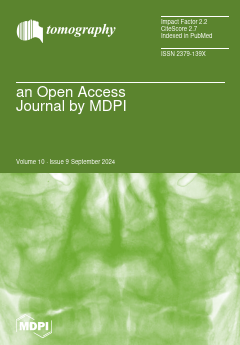Background: The workload of musculoskeletal radiologists has come under pressure. Our objective was to estimate the reading times of common musculoskeletal MRI examinations. Methods: A total of 144 radiologists were asked to estimate reading times (including interpretation and reporting) for MRI of the shoulder, elbow, wrist, hip, knee, and ankle. Multivariate linear regression analyses were performed. Results: Reported median reading times with interquartile range (IQR) for the shoulder, elbow, wrist, hip, knee, and ankle were 10 (IQR 6–14), 10 (IQR 6–14), 11 (IQR 7.5–14.5), 10 (IQR 6.6–13.4), 8 (IQR 4.6–11.4), and 10 (IQR 6.5–13.5) min, respectively. Radiologists aged 35–44 years reported shorter reading times for the shoulder (β coefficient [β] = B-3.412,
p = 0.041), hip (β = −3.596,
p = 0.023), and knee (β = −3.541,
p = 0.013) than radiologists aged 45–54 years. Radiologists not working in an academic/teaching hospital reported shorter reading times for the hip (β = −3.611,
p = 0.025) and knee (β = −3.038,
p = 0.035). Female radiologists indicated longer reading times for all joints (β of 2.592 to 5.186,
p ≤ 0.034). Radiologists without musculoskeletal fellowship training indicated longer reading times for the shoulder (β = 4.604,
p = 0.005), elbow (β = 3.989,
p = 0.038), wrist (β = 4.543,
p = 0.014), and hip (β = 2.380,
p = 0.119). Radiologists with <5 years of post-residency experience indicated longer reading times for all joints (β of 5.355 to 6.984,
p ≤ 0.045), and radiologists with 5–10 years of post-residency experience reported longer reading time for the knee (β = 3.660,
p = 0.045) than those with >10 years of post-residency experience. Conclusions: There is substantial variation among radiologists in reported reading times for common musculoskeletal MRI examinations. Several radiologist-related determinants appear to be associated with reading speed, including age, gender, hospital type, training, and experience.
Full article






